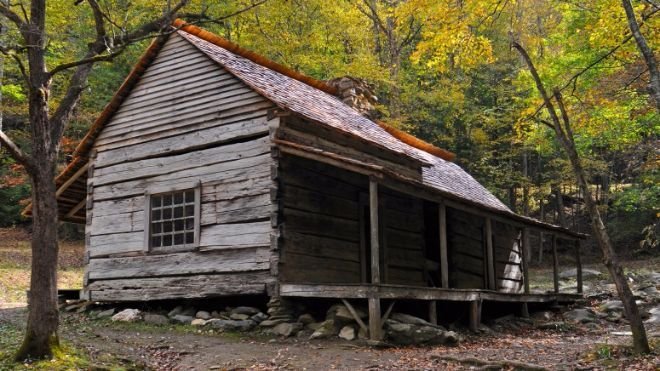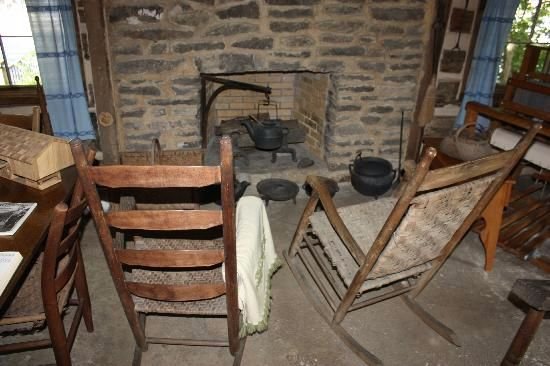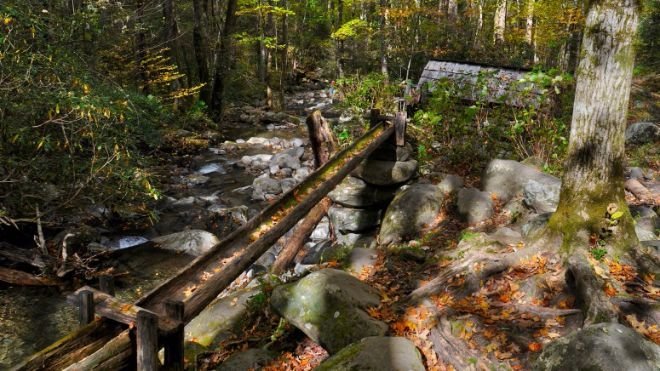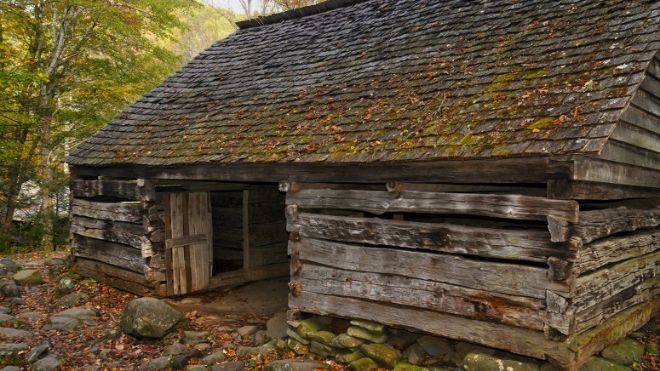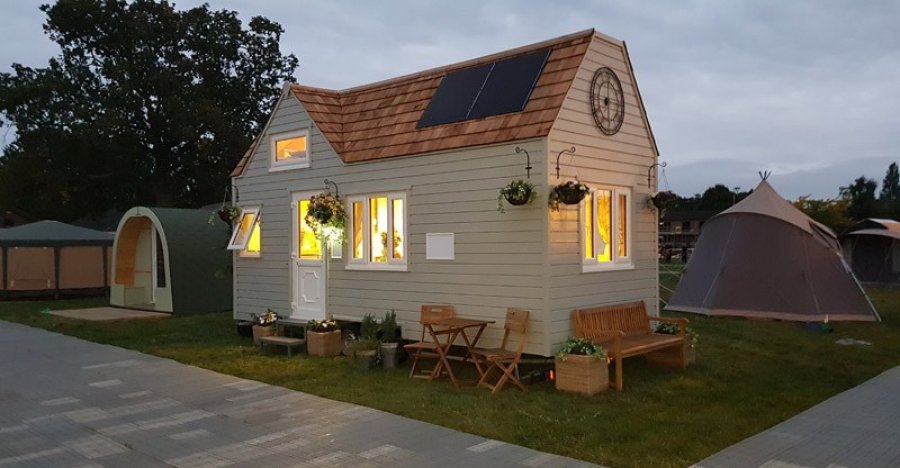
Whilst it is nice to enjoy looking at how modern construction companies design and make contemporary log cabins, it is always warming to return to the roots of log home living – back to the historic start of the times that built America. Today we will tour Noah Ogle Place for a window into America’s Appalachian past.
This quaint homestead is located in the Great Smoky Mountains of Gatlinburg, Tennessee, and is comprised of a cabin, a tub mill, and a barn. It was built by mountain farmer Noah “Bud” Ogle towards the end of the 19th-century and stands today as a reminder of the long-standing connection America has with nature, and with log cabins.
Ogle Cabin is utterly beautiful from outside. The history speaks through the wood perfectly, with every grain telling a story of the years that have passed whilst this cabin has sat here. The split-oak shingled roof really accents the majesty of this cabin, whilst the open porch invites one to dream of rural living during the days when America was being built.
“Bud” Ogle’s log cabin was added to the National Register of Historic Places in 1977 in recognition of all the characteristics of a typical 19th-century Appalachian mountain farm. It really is like stepping back in time…
Noah Ogle Cabin sits in a gorgeous 150 acres (0.61 square kilometers) of mountainous woodland. Consistent with the time, Ogle Cabin has a “saddlebag” style, which is essentially two different cabins sharing the same central fireplace. Houses grew this way as families grew, with one side of Ogle Cabin pre-dating the other by five years.
The interior of Ogle Cabin is incredibly rustic, as one would expect, and features aged idiosyncrasies along the hewn-log walls and sawn-board floor. The central fireplace has hearths on either side – both made of rubble – as practical solutions to the true center of the home.
Another historic cabin within Noah Ogle Place now houses the furniture which would have been in place in Bud’s Cabin. Let’s take a look at what it must have been like to live in a log cabin in the late 1800s…
Log cabin life in the 19th century would have worked around the fire. As a source of heat and food, everything would have revolved around the hearth. Furniture – which would have been modern at the time – added a sense of “new world” comfort to the home, including rocking chairs, a dining table, and cupboards. A sign of American homes to come!
Log home enthusiasts love evenings by the fire – well this is where it all started!
The small cupboard of items is a reminder of how simple life must have been, with little need for excessive possessions, just the tools of life and some fine crockery pieces.
I’m not so sure this settlement-time bed would be comfortable for a modern American couple!
We have to remember that Noah Ogle Place was a working mountain farm, the plantation producing a lot of corn and featured a large apple orchard which was also bountiful.
Sitting next to LeConte Creek, we find Noah Ogle’s Mill. This late 1800s building would have operated a “tub wheel” turbine to turn the grindstones.
The turbine will have been turned by this simple log flume which diverts water from the adjacent creek. It’s a testament to the quality of the traditional building techniques that this hollow-log flume still stands. How historic!
As we path deeper into the woodlands of the Great Smoky Mountains, we eventually arrive at Noah Ogle’s Barn.
Constructed in the same style as the cabin, we can see the use of hewn-log walls connected by half-dovetail notches. The split-shingled roof has aged beautifully in this rural location.
Ogle Barn is the last remaining four-pen barn in the national park. It is the final reminder of the rich history America has with log homes and log cabin living.
Did you enjoy our historic tour of Noah Ogle Place? LIKE and SHARE on Facebook to show your appreciation of rural living.
RESOURCES MALIA SMILES, TRIPADVISOR, AND NATIONAL PARK PLANNER


